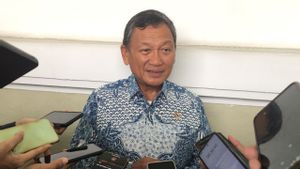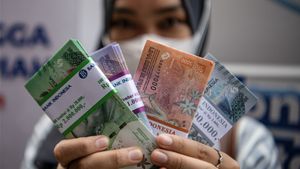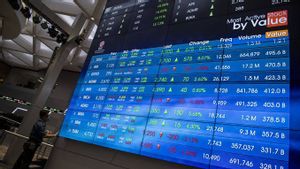JAKARTA - Finance Minister Sri Mulyani raised the oil lifting target in the 2024 State Revenue and Expenditure Budget Draft (RAPBN) to 635,000 barrels per day from the previous set of 625,000 barrels per day.
"Oil lifting rose from 625,000 to 635,000 from commission VII which illustrates the commitment to increase," Sri Mulyani said in a meeting with the Budget Agency, Thursday, September 7.
To ensure this target can be achieved, Sri Mullyani said that her party will continue to monitor the lifting activities by the Special Task Force for Upstream Oil and Gas Business Activities (SKK Migas) and Cooperation Contractors (KKKS).
"We of course will continue to monitor the KKKS and SKK Migas so that delivery from oil lifting can actually be realized at 635,000 barrels per day," continued Sri Mulyani.
Meanwhile, natural gas was observed to have not changed or remained at 1.33 million barrels of oil equivalent per day (BOEPD).
On the same occasion, the Minister of Finance also raised the assumption that the price of Indonesian oil or Indonesia Crude Price (ICP) from 80 US dollars to 82 US dollars per barrel in the 2024 State Budget Draft.
In his statement, the Minister of Finance outlined a number of basic assumptions that made the government take the initiative to raise the ICP, including oil prices that have increased in recent weeks.
"Even the current assumption is around 90 dollars per barrel. This is because both Saudi Arabia and Russia have a commitment to withhold or reduce production. Even this morning the news will be detained (production) until December," explained Sri Mulyani.
According to him, this situation then boosted prices. Moreover, countries in four seasons are heading for the winter period.
Furthermore, the Minister of Finance revealed that the United States' policy in securing national energy supply made the supply side more depressed.
SEE ALSO:
"We also heard the news (US President Joe Biden) canceled oil exploration in Alaska. This will certainly lead to the dynamics of his supply side," he stressed.
Meanwhile, the US economic demand factor is still filled with uncertainty due to the choice to lower interest rates or maintain domestic growth.
"Then the third-largest economy in the world, China, is in the form of returning the economy which now tends to weaken," he said.
"So these factors determine the dynamics of oil prices, both supply-demand and future economic prospects," concluded Sri Mulyani.
The English, Chinese, Japanese, Arabic, and French versions are automatically generated by the AI. So there may still be inaccuracies in translating, please always see Indonesian as our main language. (system supported by DigitalSiber.id)














